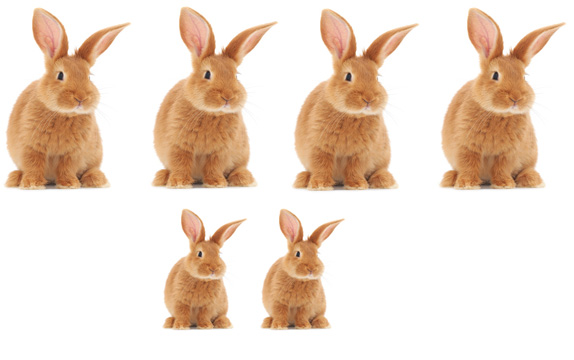

Leonardo Fibonacci c1175-1250.
The Fibonacci sequence
$$1, 1, 2, 3, 5, 8, 13, 21, 34, 55, 89, ...$$ is one of the most famous number sequences of them all. We've given you the first few numbers here, but what's the next one in line? It turns out that the answer is simple. Every number in the Fibonacci sequence (starting from $2$) is the sum of the two numbers preceding it: \begin{eqnarray*} 2 & = & 1 &+& 1 \\ 3 & = & 1 &+& 2 \\ 5 & = & 2 &+& 3\\ 8 & = & 3 &+& 5, \end{eqnarray*} and so on. So it's pretty easy to figure out that the next number in the sequence above is $55+89 = 144,$ and (in theory at least) to work out all numbers that follow from here to infinity.Where does it come from?
The Fibonacci is named after the mathematician Leonardo Fibonacci who stumbled across it in the 12th century while contemplating a curious problem. Fibonacci started with a pair of fictional and slightly unbelievable baby rabbits, a baby boy rabbit and a baby girl rabbit.

They were fully grown after one month

and did what rabbits do best, so that the next month two more baby rabbits (again a boy and a girl) were born.

The next month these babies were fully grown and the first pair had two more baby rabbits (again, handily a boy and a girl).

Ignoring problems of in-breeding, the next month the two adult pairs each have a pair of baby rabbits and the babies from last month mature.

Where does it go?
Real rabbits don't breed as Fibonacci hypothesised, but his sequence still appears frequently in nature, as it seems to capture some aspect of growth. You can find it, for example, in the turns of natural spirals, in plants, and in the family tree of bees. The sequence is also closely related to a famous number called the golden ratio. To find out more read The life and numbers of Fibonacci.
About the author
Rachel Thomas is Editor of Plus.